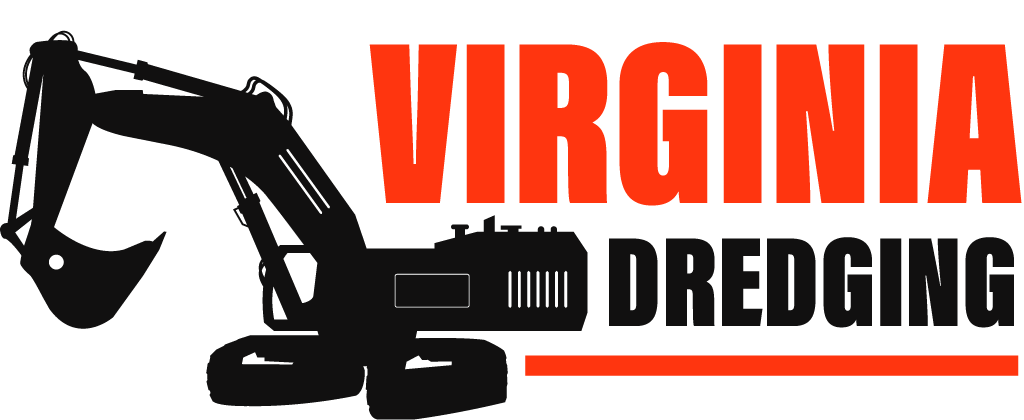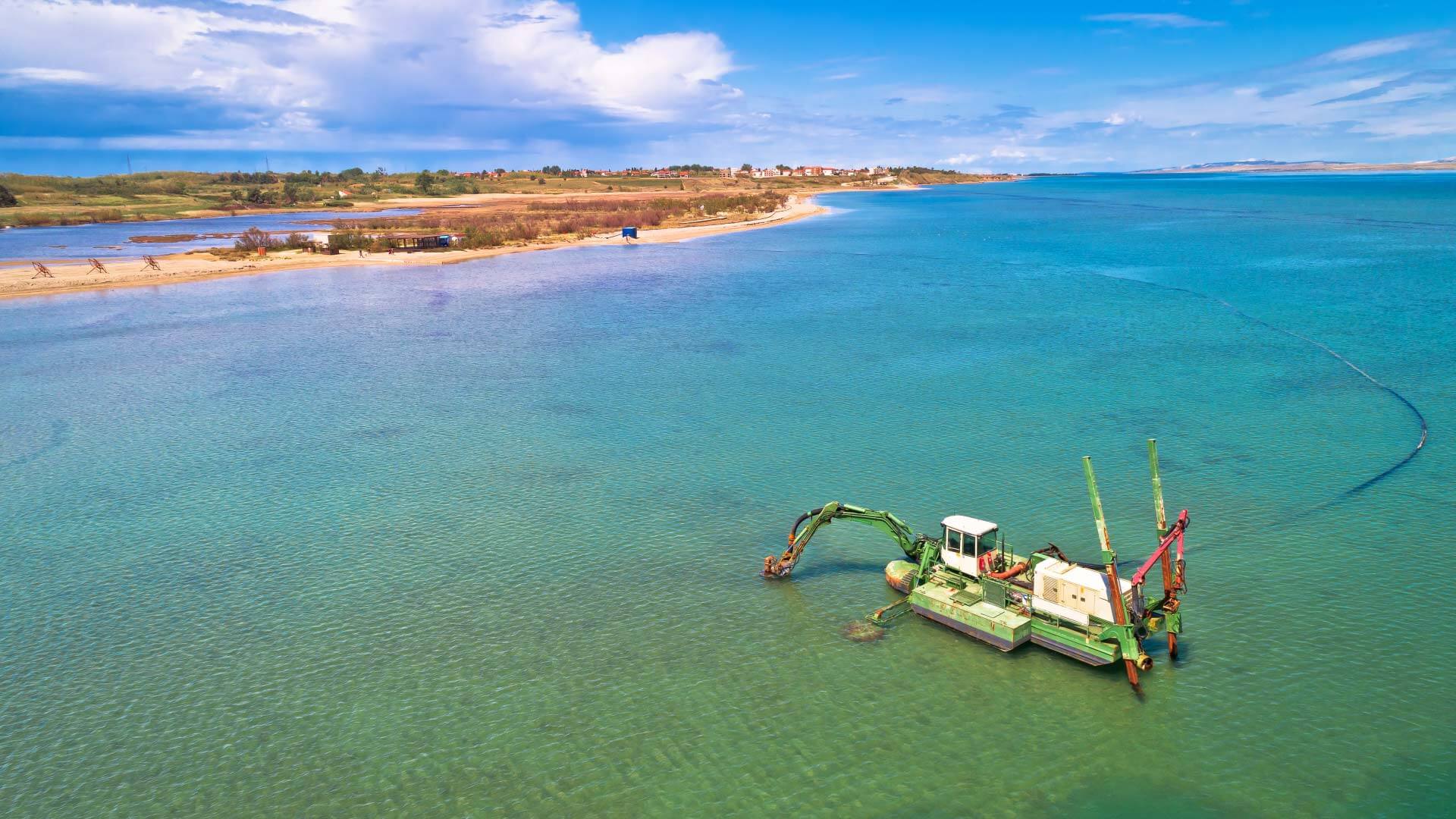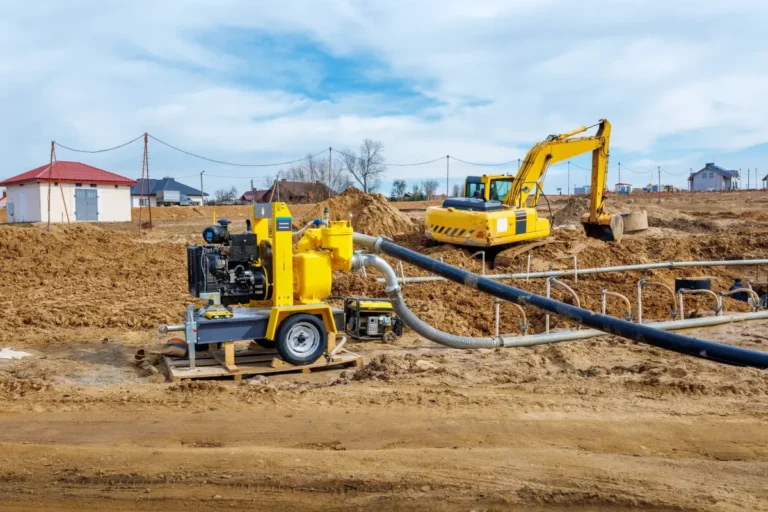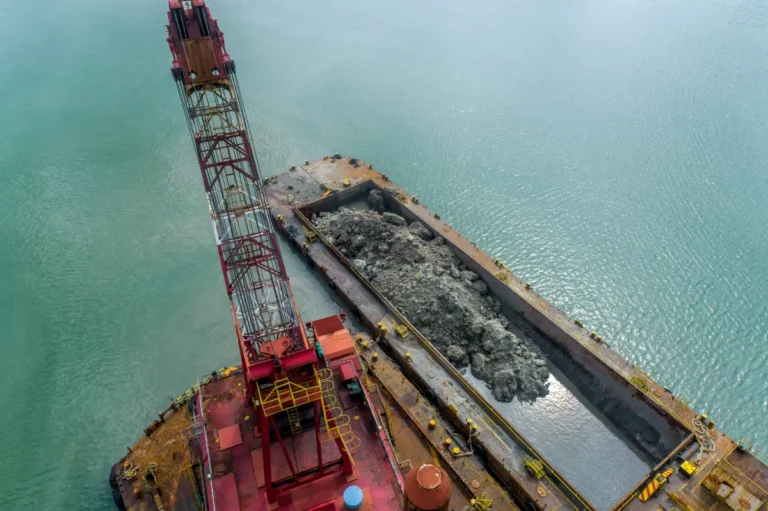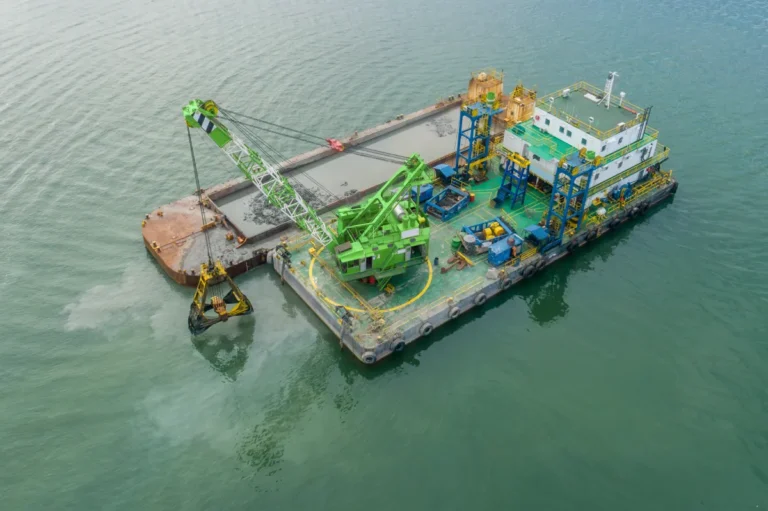Lagoon dredging is essential for maintaining the health and functionality of industrial, municipal, and environmental lagoons. Over time, lagoons accumulate sediment, organic matter, and pollutants, which reduce water capacity and compromise water quality. This buildup can disrupt wastewater treatment processes, harm aquatic ecosystems, and increase the risk of overflow or contamination. Regular lagoon dredging removes this excess sediment, restoring the lagoon’s depth and improving overall performance. Whether used for industrial wastewater treatment, stormwater management, or natural habitat preservation, lagoons require consistent maintenance to operate effectively.
However, dredging is only part of the solution. Proper dewatering and sediment disposal are critical to completing the dredging process efficiently and responsibly. Without effective dewatering, dredged material remains heavy, costly to transport, and difficult to handle. Additionally, improper disposal can lead to environmental contamination and regulatory violations. This article explores the importance of dewatering after industrial lagoon dredging, the most effective techniques for handling dredged material, and the best practices for ensuring compliance and environmental protection.
Why Dewatering is Critical After Lagoon Dredging
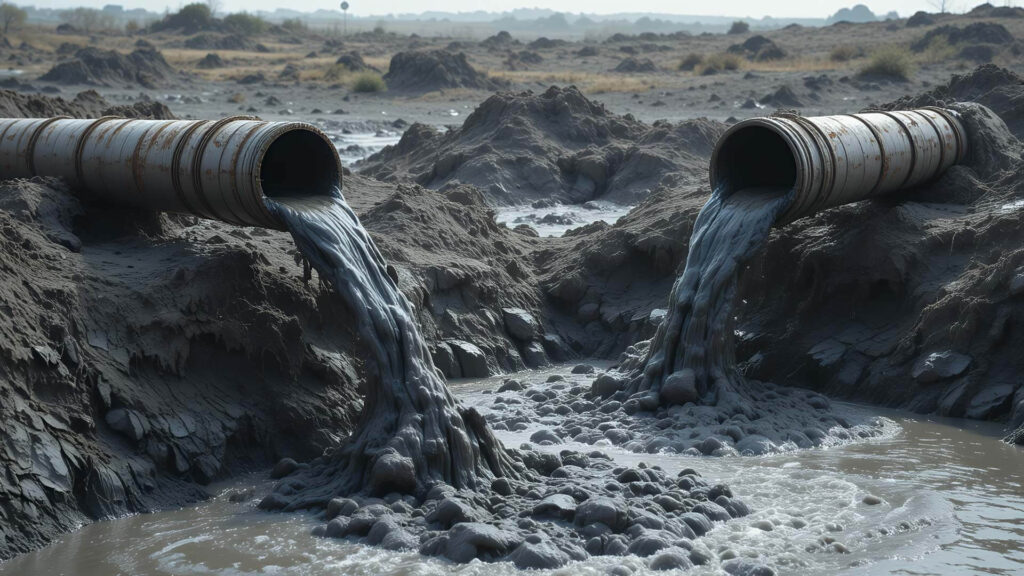
Role of Dewatering in Reducing Sediment Volume and Weight
Dewatering is a crucial step following lagoon dredging because it significantly reduces the volume and weight of dredged material. When sediment is first removed from a lagoon, it contains a high percentage of water, making it heavy and difficult to handle. Removing excess water through dewatering minimizes the overall mass, making the material easier and more cost-effective to transport and dispose of. This is particularly important for industrial lagoon dredging projects, where large quantities of sediment need to be managed efficiently to avoid high transportation and disposal costs.
Makes Transport and Disposal More Efficient and Cost-Effective
Reduced weight and volume from dewatering translate directly into lower transportation and disposal costs. Dewatered sediment requires fewer truckloads and less handling time, improving overall efficiency. For facilities managing large-scale dredge for lagoon operations, this can result in significant cost savings and a more streamlined disposal process. Efficient dewatering also allows for better planning and coordination with disposal sites, minimizing logistical challenges.
Improves Handling of Dredged Material
Sediment that has been properly dewatered is easier to handle, store, and transport. Wet sediment is unstable and can create safety risks during handling and transportation. Dewatered material, on the other hand, is more stable and easier to manage, reducing the risk of spills or accidents. This improves overall site safety and operational efficiency for both industrial and municipal dredging projects.
Environmental Benefits of Proper Dewatering
Dewatering also plays a vital role in protecting the environment after lagoon dredging. When excess water is removed from dredged material, it reduces the risk of leachate—contaminated water that can seep into surrounding soil and water sources. Proper dewatering helps contain potentially harmful substances and prevents runoff into nearby ecosystems.
Prevents Runoff and Leachate Issues
Without proper dewatering, the excess water from dredged material can carry contaminants, nutrients, and fine particles into nearby waterways, causing pollution and ecosystem disruption. Dewatering ensures that this water is treated or managed properly, preventing harmful runoff and maintaining water quality in the surrounding area.
Minimizes Impact on Local Ecosystems
By reducing the amount of water and stabilizing dredged material, dewatering helps protect local ecosystems from sediment contamination and habitat disruption. Clean water discharged after dewatering can be safely returned to the lagoon or nearby water sources, supporting aquatic life and maintaining ecological balance.
Regulatory Requirements for Water Treatment and Sediment Disposal
Environmental regulations require that water extracted during industrial lagoon dredging be treated or discharged according to strict guidelines. Proper dewatering allows facilities to meet these requirements by separating contaminants and ensuring that treated water meets acceptable quality standards. Failing to meet these guidelines can result in fines and environmental penalties, making effective dewatering a critical step in maintaining compliance and operational integrity.
Dewatering Techniques for Lagoon Dredging
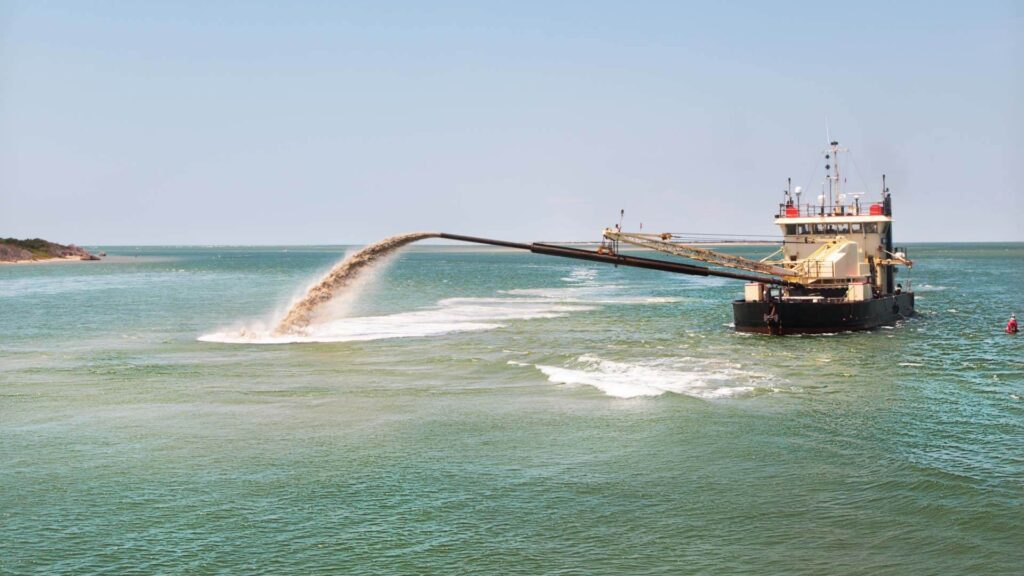
Effective dewatering is essential for managing the sediment removed during lagoon dredging. The choice of dewatering method depends on the size of the lagoon, the type of sediment, and project urgency. Using the right approach improves efficiency, reduces costs, and ensures proper handling of dredged material. Here are the most common dewatering techniques used in industrial lagoon dredging projects.
Mechanical Dewatering Methods
Mechanical dewatering methods use specialized equipment to quickly and effectively remove water from dredged sediment. These techniques are ideal for large-scale industrial lagoon dredging projects where speed and efficiency are important.
Geotextile Tubes
Geotextile tubes are large, permeable fabric containers filled with dredged sediment. As water drains through the fabric, the sediment remains inside, gradually drying out.
- How They Work: Dredged material is pumped into the geotextile tube, where water seeps out through small pores while retaining fine particles and sediment.
- Benefits:
- Cost-effective and easy to install
- Suitable for large volumes of sediment
- Minimal environmental impact
- Cost-effective and easy to install
- Ideal for: Lagoons with high sediment content and large surface areas
Filter Presses
Filter presses use pressure to separate water from sediment, creating a dry, compact material for disposal.
- Process: Dredged material is pumped into a filter chamber, where high pressure forces water out through a filter cloth, leaving behind dry sediment cakes.
- Pros and Cons:
- High efficiency and quick processing time
- Effective for fine and coarse sediment
- Higher initial cost and maintenance requirements
- High efficiency and quick processing time
- Best for: Large-scale dredge for lagoon projects requiring quick turnaround times
Belt Filter Presses
Belt filter presses provide a continuous dewatering process using a series of moving belts and rollers.
- Process: Sediment is fed onto a belt, where water is squeezed out by pressure and rollers. The dried material is then discharged for disposal.
- Benefits:
- Continuous operation improves processing speed.
- High efficiency for fine and organic sediments
- Lower labor requirements than other mechanical methods
- Continuous operation improves processing speed.
- Best for: High-volume industrial lagoon dredging projects
Passive Dewatering Methods
Passive methods rely on natural settling and evaporation to remove water from dredged material. These methods are slower but more cost-effective and environmentally friendly.
Settling Ponds
Settling ponds allow sediment to separate from water over time naturally.
- How They Work: Dredged material is placed in a designated pond, where gravity causes sediment to settle at the bottom while clear water rises to the top.
- Benefits:
- Low cost and minimal maintenance
- Suitable for large lagoons with low urgency
- Low cost and minimal maintenance
- Best for: Large industrial lagoons with sufficient space and time for natural settling
Drying Beds
Drying beds use evaporation and drainage to remove water from the sediment.
- How They Work: Dredged material is spread out in shallow beds, allowing water to evaporate naturally or drain into collection channels.
- Benefits:
- Simple and cost-effective
- No need for complex equipment
- Simple and cost-effective
- Best for: Small-scale lagoon dredging projects with minimal sediment
Hybrid Dewatering Approaches
Combining mechanical and passive methods often results in greater efficiency and cost savings.
- Example: Geotextile tubes can be used initially to remove most of the water, followed by drying beds for final moisture reduction.
- Benefits:
- Faster processing with lower overall costs
- Flexibility based on project size and sediment type
- Faster processing with lower overall costs
- Best for: Complex dredge for lagoon projects with varying sediment compositions and volume requirements
Sediment Disposal Options After Lagoon Dredging
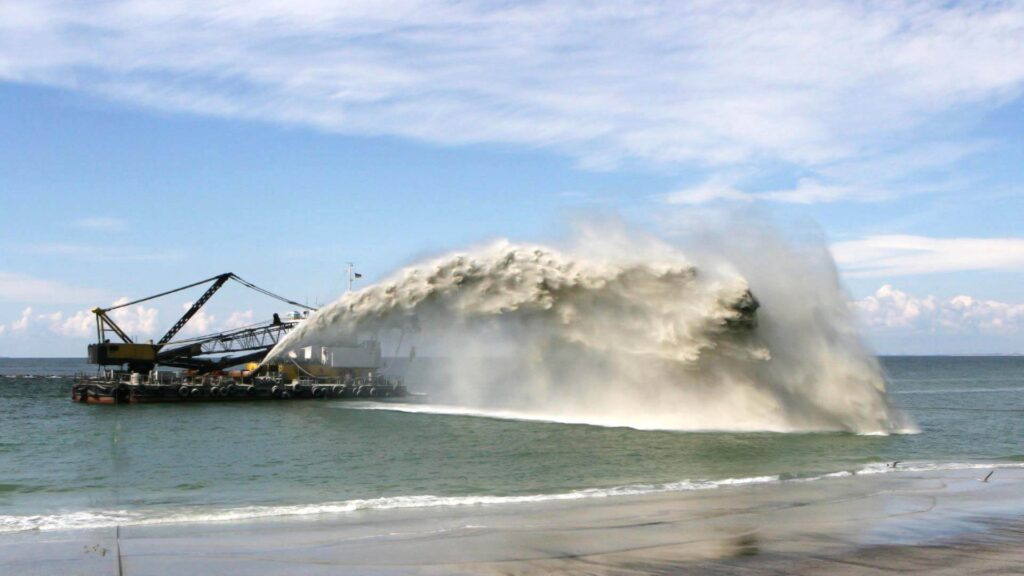
Proper sediment disposal is a crucial step after lagoon dredging to ensure environmental safety and regulatory compliance. Once dredged material is dewatered, it must be handled and disposed of according to local, state, and federal guidelines. Disposal methods vary depending on the type of sediment, environmental factors, and project scale. Effective management of dredged material reduces environmental impact and can create opportunities for beneficial reuse. Here are the most common sediment disposal options for industrial lagoon dredging projects.
Land-Based Disposal
Land-based disposal is one of the most widely used methods for managing dredged material, especially when the sediment is contaminated or unsuitable for environmental reuse.
Landfills
Disposing of dredged sediment in landfills is a straightforward option, but it requires careful handling and classification of the material.
- Requirements for Hazardous and Non-Hazardous Materials:
- Sediment must be tested for contaminants and toxins.
- Hazardous materials must be handled in accordance with environmental regulations.
- Sediment must be tested for contaminants and toxins.
- Cost Considerations and Transportation Logistics:
- Transporting sediment to landfills increases costs due to weight and volume.
- Dewatering reduces transportation costs and makes landfill disposal more efficient.
- Transporting sediment to landfills increases costs due to weight and volume.
- Best for: Sediment containing pollutants or industrial waste.
Reclamation Projects
Dredged sediment can be used in land reclamation and soil enhancement projects, turning waste material into a valuable resource.
- Using Dredged Sediment for Land Reclamation:
- Suitable for filling low-lying areas or creating new land.
- Stabilizes shorelines and prevents erosion.
- Suitable for filling low-lying areas or creating new land.
- Environmental Considerations:
- Testing for contaminants is required to prevent soil and water pollution.
- Only non-toxic material should be used in agricultural or public spaces.
- Testing for contaminants is required to prevent soil and water pollution.
- Best for: Clean sediment with high organic or mineral content.
Water-Based Disposal
Water-based disposal is less common due to strict environmental regulations, but it can be a viable option in certain cases.
Ocean Disposal (If Permitted)
Dumping dredged material into the ocean is highly regulated and only allowed under specific conditions.
- Regulatory Hurdles and Environmental Concerns:
- Permits are required from environmental agencies.
- The material must meet strict contamination guidelines.
- Permits are required from environmental agencies.
- Monitoring and Compliance Requirements:
- Regular monitoring for environmental impact is required.
- Ocean disposal may be prohibited in sensitive ecological zones.
- Regular monitoring for environmental impact is required.
- Best for: Clean sediment without contaminants or harmful chemicals.
Beneficial Reuse in Wetlands
Using dredged material to restore or create wetlands is an environmentally beneficial option.
- Restoring Coastal Areas and Wetlands:
- Dredged sediment can rebuild eroded shorelines.
- Enhances habitats for wildlife and supports ecosystem health.
- Dredged sediment can rebuild eroded shorelines.
- Environmental and Economic Benefits:
- Reduces coastal erosion.
- Supports local fisheries and ecosystems.
- Reduces coastal erosion.
- Best for: Clean sediment with organic material suitable for wetland ecosystems.
Recycling and Repurposing of Sediment
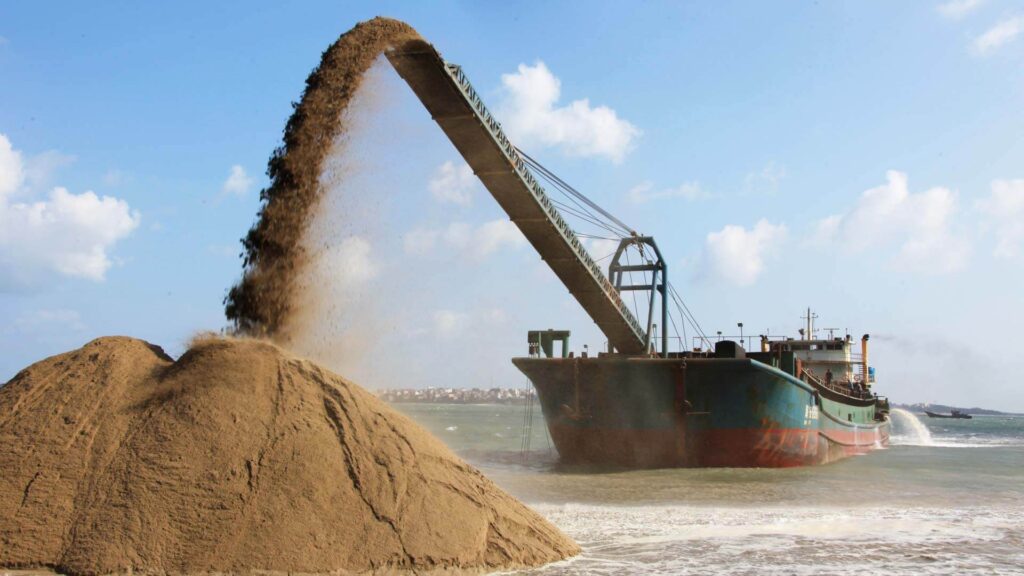
Repurposing dredged material creates an opportunity for cost savings and environmental benefits.
Construction Material
Dredged sediment can be processed and used in construction projects.
- Use of Dredged Sediment in Concrete or Fill Material:
- Fine sediment can be mixed with cement for concrete production.
- Coarse sediment can be used as fill for roadbeds and construction sites.
- Fine sediment can be mixed with cement for concrete production.
- Feasibility and Cost Factors:
- Materials must meet structural and safety standards.
- Transportation and processing costs should be considered.
- Materials must meet structural and safety standards.
- Best for: Stable, non-contaminated sediment with consistent particle size.
Soil Conditioning and Agricultural Use
Dredged sediment can be used to improve soil quality in agricultural and landscaping projects.
- Testing for Contaminants and Nutrient Levels:
- Sediment should be free of heavy metals and harmful chemicals.
- Nutrient-rich sediment can enhance soil fertility.
- Sediment should be free of heavy metals and harmful chemicals.
- Use in Soil Restoration and Erosion Control:
- Improves soil structure and water retention.
- Helps prevent erosion on agricultural land and construction sites.
- Improves soil structure and water retention.
- Best for: Organic-rich sediment with beneficial nutrient content.
Environmental and Regulatory Considerations
Proper handling of dredged material and compliance with environmental regulations are critical aspects of lagoon dredging projects. Dredging activities can have significant environmental impacts, including changes to water quality, disruption of aquatic ecosystems, and the potential release of contaminants. To minimize these risks and maintain compliance, project managers must follow strict permitting and monitoring requirements at every stage of the dredging and disposal process.
Permitting and Environmental Impact Assessments
Before starting any industrial lagoon dredging project, obtaining the necessary permits and conducting an environmental impact assessment (EIA) is required.
- Permitting Requirements:
- Permits are issued by local, state, and federal environmental agencies.
- Applications must outline the scope of the project, sediment characteristics, and disposal plans.
- Permits are issued by local, state, and federal environmental agencies.
- Environmental Impact Assessments:
- Assess the potential impact on water quality, aquatic life, and surrounding ecosystems.
- Include mitigation plans to reduce environmental disruption.
- Assess the potential impact on water quality, aquatic life, and surrounding ecosystems.
- Best Practices:
- Engage environmental consultants early in the planning process.
- Ensure that all dredging and disposal activities meet permit conditions.
- Engage environmental consultants early in the planning process.
Monitoring Water Quality and Sediment Characteristics
Continuous monitoring of water quality and sediment composition is essential to prevent environmental harm during and after lagoon dredging.
- Water Quality Monitoring:
- Measure pH levels, turbidity, and contaminant concentrations.
- Ensure that discharged water meets environmental standards.
- Measure pH levels, turbidity, and contaminant concentrations.
- Sediment Testing:
- Test for heavy metals, nutrients, and organic compounds.
- Separate contaminated sediment for proper disposal.
- Test for heavy metals, nutrients, and organic compounds.
- Compliance Measures:
- Adjust dredging methods if monitoring reveals excessive pollution levels.
- Implement filtration or treatment systems as needed.
- Adjust dredging methods if monitoring reveals excessive pollution levels.
Compliance with Local, State, and Federal Regulations
Compliance with environmental regulations is essential for avoiding fines, legal issues, and project delays.
- Local Regulations:
- Ensure that lagoon dredging activities align with municipal guidelines.
- Meet discharge and sediment disposal limits.
- Ensure that lagoon dredging activities align with municipal guidelines.
- State and Federal Regulations:
- Follow guidelines set by the Environmental Protection Agency (EPA) and other regulatory bodies.
- Adhere to the Clean Water Act and other applicable environmental laws.
- Follow guidelines set by the Environmental Protection Agency (EPA) and other regulatory bodies.
- Documentation and Reporting:
- Keep detailed records of dredging activities and monitoring results.
- Submit required reports to regulatory agencies on time.
- Keep detailed records of dredging activities and monitoring results.
Best Practices for Efficient Dewatering and Sediment Disposal
Effective dewatering and sediment disposal are essential for the success of any lagoon dredging project. Proper planning and execution not only improve operational efficiency but also reduce environmental impact and ensure regulatory compliance. By following best practices, project managers can minimize costs, streamline operations, and protect surrounding ecosystems during and after industrial lagoon dredging projects.
Pre-Dredging Planning and Site Assessment
Thorough planning is critical before beginning any dredge for lagoon operation.
- Site Assessment:
- Analyze lagoon size, depth, and sediment composition.
- Identify potential environmental risks and obstacles.
- Analyze lagoon size, depth, and sediment composition.
- Project Scope:
- Determine the volume of sediment to be removed.
- Assess water content and potential contaminants.
- Determine the volume of sediment to be removed.
- Permitting and Compliance:
- Obtain necessary permits from local and federal agencies.
- Develop a detailed dredging and disposal plan.
- Obtain necessary permits from local and federal agencies.
Comprehensive pre-dredging planning ensures that the right equipment, dewatering methods, and disposal strategies are selected, leading to a smoother project execution.
Selection of Appropriate Dewatering Methods Based on Lagoon Size and Sediment Type
Choosing the right dewatering method depends on the characteristics of the lagoon and the type of sediment involved.
- Geotextile Tubes: Best for large lagoons with high sediment content.
- Filter Presses and Belt Filter Presses: Ideal for projects requiring fast processing of fine sediment.
- Settling Ponds and Drying Beds: Suitable for lagoons with low urgency and adequate space for natural drying.
- Hybrid Approaches: Combining mechanical and passive methods can maximize efficiency and reduce costs.
Selecting the right dewatering approach minimizes handling time and improves sediment disposal efficiency.
Safe Handling and Transport of Dredged Material
Proper handling and transportation of dredged material are essential to avoid environmental contamination and operational disruptions.
- Dewatering Efficiency: Ensure sediment is properly dewatered before transport to reduce weight and volume.
- Containment: Use lined trucks, covered containers, and secure transport methods to prevent spillage.
- Disposal Site Preparation: Confirm that disposal sites are equipped to handle the type and volume of dredged material.
- Compliance: Follow local and federal regulations for hazardous or contaminated materials.
Efficient handling and transport prevent material loss and reduce costs associated with reprocessing or additional disposal.
Long-Term Monitoring of Restored Lagoon Areas
Post-dredging monitoring helps ensure that the lagoon remains stable and functions as intended.
- Water Quality Testing: Monitor pH, turbidity, and contaminant levels in the lagoon.
- Sediment Stability: Check for signs of erosion or shifting sediment.
- Ecosystem Health: Assess aquatic life and vegetation for signs of improvement or stress.
- Regular Maintenance: Schedule periodic dredging and sediment removal to prevent future buildup.
Long-term monitoring ensures that the benefits of lagoon dredging are maintained over time and helps identify issues before they become costly problems.
Conclusion
Effective lagoon dredging requires more than just sediment removal—it involves strategic dewatering and proper disposal to minimize environmental impact and operational costs. Choosing the right dewatering technique, whether mechanical, passive, or hybrid, improves handling efficiency and reduces transportation expenses. Proper sediment disposal, whether through land-based, water-based, or recycling methods, ensures compliance with environmental regulations and protects local ecosystems. By following best practices for dewatering and sediment management, facilities can maintain lagoon performance, meet regulatory requirements, and support long-term environmental health.

